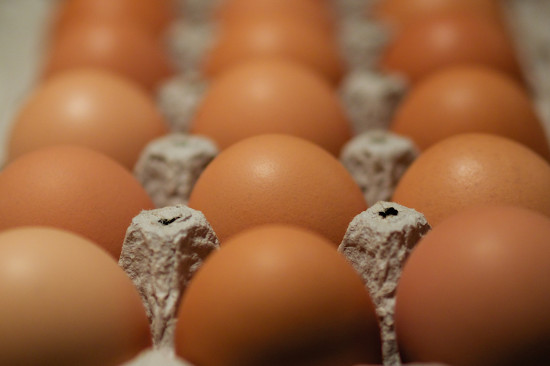
The epidemic has already infected at least 8% of egg-laying hens, which has led to a hike in prices seen throughout the country. According to a report from the United States Department of Agriculture (USDA), they have seen the average price for a dozen eggs almost double since the end of May.
Needless to say, this shortage is having a major impact on businesses and consumers alike. Tom Jones, who owns Tommy’s Cafe in Davenport, Iowa, has had to raise prices for his egg-containing meals to match the increase he’s experiencing on the business end. According to the cafe owner, he paid just over $16 for a case of 16 eggs in early May, but on June 1st, the same amount of eggs cost a staggering $40.98.
For egg-loving Americans in certain states, it is increasingly difficult and pricey to make their egg sandwiches a reality. This is due to the mass killing of turkeys and chickens that is occurring to stem the spread of influenza. Jones’ state of Iowa has declared a state of emergency due to the national crisis, and millions of chickens have had to be slaughtered.
Texas has also had to deal with the egg crisis in its own way, even though the outbreak is not reported to have hit the state yet. “We do not produce enough eggs to meet our own demand in the state. So Texas has to import eggs from other states,” says Dr. Craig Coufal, an Associate Professor at Texas A&M University.
The solution for dealing with the egg shortage that many businesses are resorting to is rationing eggs to consumers. The national supermarket store H-E-B decided to not sell eggs for commercial sale and posted signs in their Texas stores stating the decision. Even Texas-based fast-food company Whataburger decided that pressing the pause button on their breakfast menu was the best way for them to handle the current situation.
The entire poultry industry and private businesses are being hit hard by the flu outbreak, but consumers are certainly feeling the ramifications of the epidemic. When the bulk price of a dozen eggs was just $0.63 by the dozen before the crisis, consumers are now paying as much as or upwards of $1.50.
And it’s not just the oval egg food itself that consumers need to suffer higher prices to purchase. A national shortage of eggs will not just drive up egg prices, but products that includes eggs in the ingredients such as breads, dessert goods, candies, and many more foods that call for whole eggs, yolks, or egg whites in the recipe.
Americans all over the country would like to see this bird flu epidemic break as soon as possible. Small businesses don’t like driving up prices if they don’t have to and consumers do not like paying more if they can avoid it. Plus, if this shortage continues throughout the remaining months of 2015, holiday festivities could be a bit less festive due to a scarcity of or increased price for the popular holiday eggnog beverage, and nobody would want that.
(Photo courtesy of Austin Kirk)
Comments